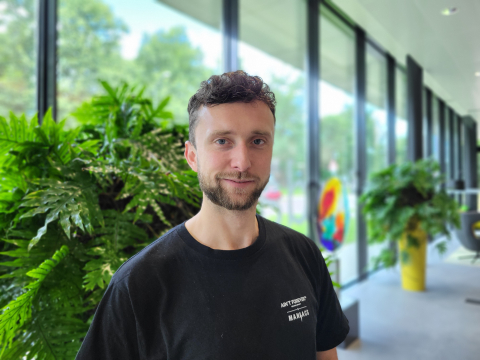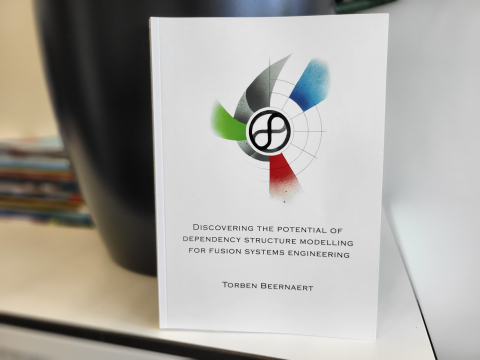The design of nuclear fusion systems involves many complex challenges. Lots of aspects need to be solved concurrently, and there are many problems that affect each other. Dependency structure modelling is needed in this process, says DIFFER PhD candidate Torben Beernaert. On 8 July he defends his PhD thesis 'Discovering the potential of dependency structure modelling for fusion systems engineering'.

What is your research about?
“We see many challenges in the different fields of fusion energy systems engineering, e.g. in terms of physics, materials, control, maintenance and reliability. To solve the totality of these problems you need to make concessions, so you need to have a full scope. My conceptual solution for achieving this, is by making models that connect all these aspects; so-called dependency structure models. These models can be set up in such a way that all aspects will be tied together.”
How did you manage that?
“The question was: What should such a model look like? How should it be constructed, and how is it going to help us making the right planning and decisions? To do this, I used various design and system theories. Naturally, also physics aspects were involved. All of that taken together, I made new model-based design methods that play a role in nuclear fusion engineering.”
Can you explain this by using a metaphor?
“Imagine making a new dining table by yourself. Before you start, you ask yourself questions like ‘how many people will need to sit at the table?’ and ‘how much money do I want to spend on this table?’. Then you make a draft of the design and you collect the materials you need. During this process, it’s possible that you’ll realise something doesn’t fit the way you expected, for instance that your chairs are too big for the design. You will have to go back to previous steps in the process to make adjustments. Dependency models will make sure that you get a full overview on the impacts of such adjustments, e.g. number of people, costs or planning. In the end, the model must fit on all levels.”
What makes your research unique?
“It’s the first time dependency structure modelling has been researched in the fusion world on a scale like this. My fellow authors and I have been the first to describe what happens in a fusion device in an abstract, systematic fashion. With this we’ve put structure in complexity. Others probably would describe things more specifically, from a specific angle. I try to see the totality, the bigger picture.”
What helps to see that bigger picture?
“Make clusters and bring structure to whatever system. When you’ve got a process with 1000 activities, you can try to divide them into 5 parts of 200 activities. That makes the process much more clear.”

What is your main advice for people working in the world of fusion energy?
“I hope everyone who is working on enormous fusion energy projects (like ITER) realises that the work cannot be done alone. The bigger, holistic picture is so important; every activity depends on another activity. You really need to be in contact and collaborate. Dependency structure models can improve communication and collaboration. And sometimes it’s good to realise; ‘we don’t know everything yet, but enough to continue the process’. Go into details as much as needed. It would be great if my thesis will give a kind of a boost, and that the methods and techniques I’ve researched will be actively used.”
What are your plans for the future?
“I’m not quite sure what my next steps will look like. In any case, I know that I enjoy being in contact with many people and learning from them. Relations are important for me, in every project I look for connections and overlays. I would love to develop myself in a broader sense, I don’t want to focus too much in one specific direction. I’m a specialist in being a generalist.”
Torben Beernaert has a bachelor’s degree in Mechanical Engineering at TU/e and a master’s degree in Automotive Engineering (specialisation Systems Engineering) at TU/e. Read more.
Author: Rianne van Hoek
Go to the News page.